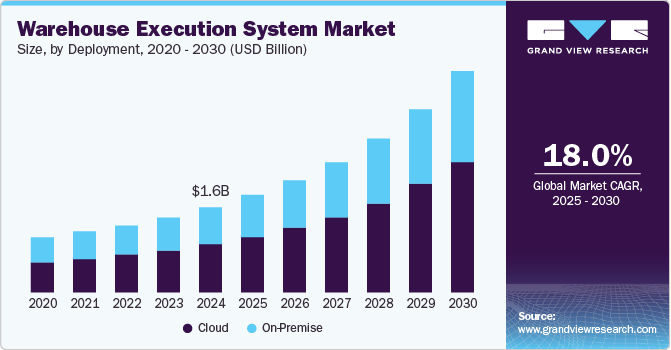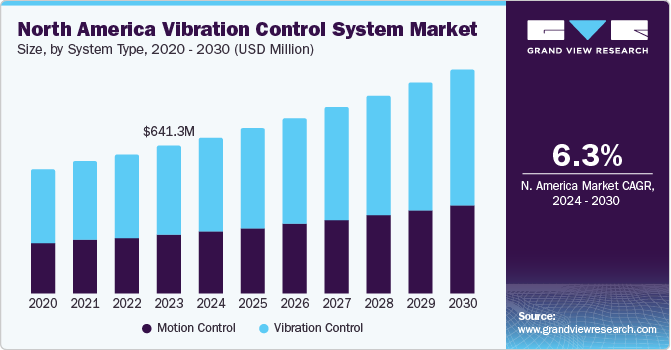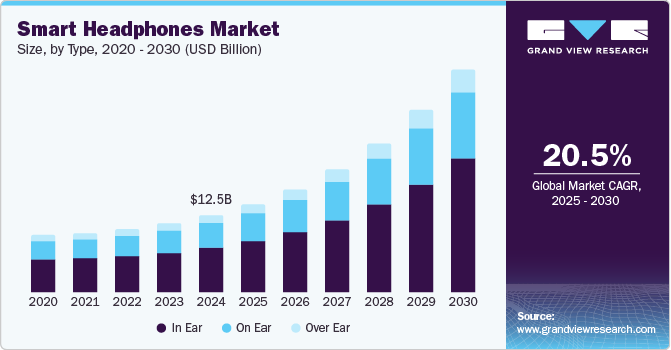Warehouse Execution System Market Size, Share & Trends Analysis growing at a CAGR of 18.0% from 2025 to 2030

The global warehouse execution system market size was valued at USD 1.64 billion in 2024 and is projected to grow at a CAGR of 18.0% from 2025 to 2030. Unprecedented growth experienced by the e-commerce industry and online grocery shopping, rising inclination towards utilization of online on-demand delivery platforms for multiple products including consumer goods, electronics, homecare & decor, health & wellbeing, textile, kitchenware, home appliances, and others, and growing adoption of modern technologies in retail & warehousing businesses are contributing to the growth of this market.
Request a free sample copy or view report summary: https://www.grandviewresearch.com/industry-analysis/warehouse-execution-system-market/request/rs1
An increase in order volumes and velocity is the primary reason for the increasing adoption of the warehouse execution system (WES). The enhancements in processing and operational workflow enabled by the WES ensure improved efficiency and effectivity in warehouses and distribution centers. This technology adoption minimizes the possibility of errors, reduces risks and losses and empowers businesses with quality assurance.
Warehouse execution system is a hybrid software system having capabilities of Warehouse Control System (WCS) and Warehouse Management System (WMS) and is an ideal solution for organizations having large order volumes and high throughput needs. It helps to coordinate equipment and labor through dynamic optimization, which helps facility owners manage resources and optimize facility operations. Moreover, with an increased order volume, the automated warehouse facilities must be equipped with the latest technologies to cater to the increasing need for agile fulfillment.
Manufacturers and warehousing service providers are increasingly focusing on automating processes in their facilities. More emphasis is being given to software solutions such as WES, which include various functions such as automation control, optimized order execution, intelligent routing, optimized workflows, automated sortation, real-time visibility, congestion management, among others.
Innovation and new product or solution launches by technology and automation companies worldwide are expected to contribute to the growth of this market. For instance, in March 2024, Körber AG, one of the prominent companies in the software technology and innovation industry, launched three additions to its diverse portfolio of warehouse solutions, which address common pain points in supply chain and productivity while assisting companies in unlocking novel capabilities. Körber Gamification, Körber’s Slotting.IQ and Körber’s Unified Control System (UCS) are expected to offer extra-ordinary growth in warehouse efficiency to its users.
Component Insights
Based on component, the software segment dominated the global warehouse execution system market with revenue share of 65.9% in 2024. The segment is also anticipated to remain dominant over the forecast period. The high growth of this segment is attributed to the capability of the WES solutions to increase the potential of automated warehouses. This is achieved by managing labor, inventory resources, and machines against high order volumes and strict delivery timelines. The warehouse execution system heightens visibility across the warehouse, comprising the best parts of the warehouse management and control systems. The features that increase end-to-end visibility include replenishment management, inventory management, mobile scanner integration, and receiving/shipping management. Small or medium-scale operations can be easily moved to a single WES software. Innovation and the inclusion of advanced technology assistance are adding to the growth opportunities of this segment. This includes overlapping wave order management, NexGen WES emulation, WES 1 million transaction testing, PickMate user tool, proprietary path planning algorithms, Barcode scanning, RFID technology, automated systems, and more.






